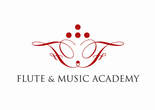Rhythmic design is in my opinion more distinctive and memorable in music compositions. Hence, that makes it crucial to master accurate rhythm and have a good sense of internal timing. This is also a foundational skill for effective ensemble performance.
There are many strategies out there. In this article, I just want to highlight the 7 methods which I used most often with my piano students. They are of course, also applicable to other lnstruments.
1. Play with a Metronome
This is probably the most convenient way to quickly internalise the intended beat.
There are also other ways to use it. Firstly, it a useful tool to do slow practice and gradually move to the intended speed. I usually build up 5bpm with my students, ensuring each round is fluent and steady. Secondly, I find that students respond well to this when they struggle with subdivided beats too. For example, in a typical swing beat of a jazz beats, 2 quavers is played as triplet quavers instead. Students who initially struggle with this rhythm usually do better with a metronome providing subdivided beats. This is slowly weaned off once they can feel the crotchet beats instead.
2. Record yourself
I record my students playing very often. Because recordings don’t lie. And this is great for students who are stuck in the “non-awareness” zone.
Now and then, I come across students who are not even “aware” when they keep losing the pulse at certain bars, even after it was rectified with metronome and teacher’s guidance. However, after I showed them the recording, the feedback is immediate and valuable. Sometimes we also tap and clap together with the recording to review the rhythm. The non-aware to being-aware stage is crucial change for any correction to take place. :)
3. Add physical movement to a pulse
Sometimes when the metronome is not solving much rhythmic issue, I add in a physical movement to match the rhythm instead. Known as eurhythmics, this idea is that music should be learned through all the senses, including kinesthetic (physical awaress). This is especially useful for younger learners who are active. However, it can be a fun break for teens/adult learners too.
The movements could be simply marching around, clapping at specific beats or add dance move at certain beats. Whatever physical moves that will engage yourself and make your rhythmic pulse stronger is the key. This exercise could be further enhanced by using together with the metronome.
4. Learn to count subdivided rhythm when necessary
Sometimes the change of rhythm makes it hard to play certain rhythm in the context. The most common issue I have encountered is the dotted quaver followed by the semiquaver rhythm. Sometimes, it is useful to just count four semiquavers to get the dotted rhythm accurate. There are also times we even need to count simply quavers (1+2+3+ ...) instead of the main beat just to get the internal pulse going accurately. So in short, it is not always about counting just the main beats all the time.
5. Use words with similar rhythm for passages that keep going awry
Sometimes thinking of a word or sentence with a similar rhythm helps to cure the rhythm accuracy. My favourite example is to ask students to think of the word “banana” or “pineapple” when playing triplets. It does help most of the time.
6. Count out loud or tap
Counting out loud or tapping works for some students but not all. Some students are shy or some students may have problem even coordinating various movements. But for those who thrive on this method, it is also a good way to develop their “muscle” for consistent internal counting. This brings me to the next point.
7. Consistent Internal Counting
Over the years, what I find more fascinating is that even when students know how to count, they choose not to count whenever they start a piece or throughout the piece. Internal counting is like the heartbeat of musician, it needs to be ongoing from before the piece starts till the piece ends. If you are not in the habit of internal counting, use the strategies (1) – (5) to build your "muscle" in internal counting.
Last but not least, if you have an established music partner (with good sense of rhythm) to spar with, this would also help you enhance your internal pulse. Though provided that your spar partner is fine to spar with you. :)
On my final words, I hope the sharing would help you enhance your rhythm and sense of pulse.
Leaving you a quote to ponder
There are many strategies out there. In this article, I just want to highlight the 7 methods which I used most often with my piano students. They are of course, also applicable to other lnstruments.
1. Play with a Metronome
This is probably the most convenient way to quickly internalise the intended beat.
There are also other ways to use it. Firstly, it a useful tool to do slow practice and gradually move to the intended speed. I usually build up 5bpm with my students, ensuring each round is fluent and steady. Secondly, I find that students respond well to this when they struggle with subdivided beats too. For example, in a typical swing beat of a jazz beats, 2 quavers is played as triplet quavers instead. Students who initially struggle with this rhythm usually do better with a metronome providing subdivided beats. This is slowly weaned off once they can feel the crotchet beats instead.
2. Record yourself
I record my students playing very often. Because recordings don’t lie. And this is great for students who are stuck in the “non-awareness” zone.
Now and then, I come across students who are not even “aware” when they keep losing the pulse at certain bars, even after it was rectified with metronome and teacher’s guidance. However, after I showed them the recording, the feedback is immediate and valuable. Sometimes we also tap and clap together with the recording to review the rhythm. The non-aware to being-aware stage is crucial change for any correction to take place. :)
3. Add physical movement to a pulse
Sometimes when the metronome is not solving much rhythmic issue, I add in a physical movement to match the rhythm instead. Known as eurhythmics, this idea is that music should be learned through all the senses, including kinesthetic (physical awaress). This is especially useful for younger learners who are active. However, it can be a fun break for teens/adult learners too.
The movements could be simply marching around, clapping at specific beats or add dance move at certain beats. Whatever physical moves that will engage yourself and make your rhythmic pulse stronger is the key. This exercise could be further enhanced by using together with the metronome.
4. Learn to count subdivided rhythm when necessary
Sometimes the change of rhythm makes it hard to play certain rhythm in the context. The most common issue I have encountered is the dotted quaver followed by the semiquaver rhythm. Sometimes, it is useful to just count four semiquavers to get the dotted rhythm accurate. There are also times we even need to count simply quavers (1+2+3+ ...) instead of the main beat just to get the internal pulse going accurately. So in short, it is not always about counting just the main beats all the time.
5. Use words with similar rhythm for passages that keep going awry
Sometimes thinking of a word or sentence with a similar rhythm helps to cure the rhythm accuracy. My favourite example is to ask students to think of the word “banana” or “pineapple” when playing triplets. It does help most of the time.
6. Count out loud or tap
Counting out loud or tapping works for some students but not all. Some students are shy or some students may have problem even coordinating various movements. But for those who thrive on this method, it is also a good way to develop their “muscle” for consistent internal counting. This brings me to the next point.
7. Consistent Internal Counting
Over the years, what I find more fascinating is that even when students know how to count, they choose not to count whenever they start a piece or throughout the piece. Internal counting is like the heartbeat of musician, it needs to be ongoing from before the piece starts till the piece ends. If you are not in the habit of internal counting, use the strategies (1) – (5) to build your "muscle" in internal counting.
Last but not least, if you have an established music partner (with good sense of rhythm) to spar with, this would also help you enhance your internal pulse. Though provided that your spar partner is fine to spar with you. :)
On my final words, I hope the sharing would help you enhance your rhythm and sense of pulse.
Leaving you a quote to ponder
“Perhaps of all the most basic elements of music, rhythm most directly affects our central nervous system.” George Crumb.


